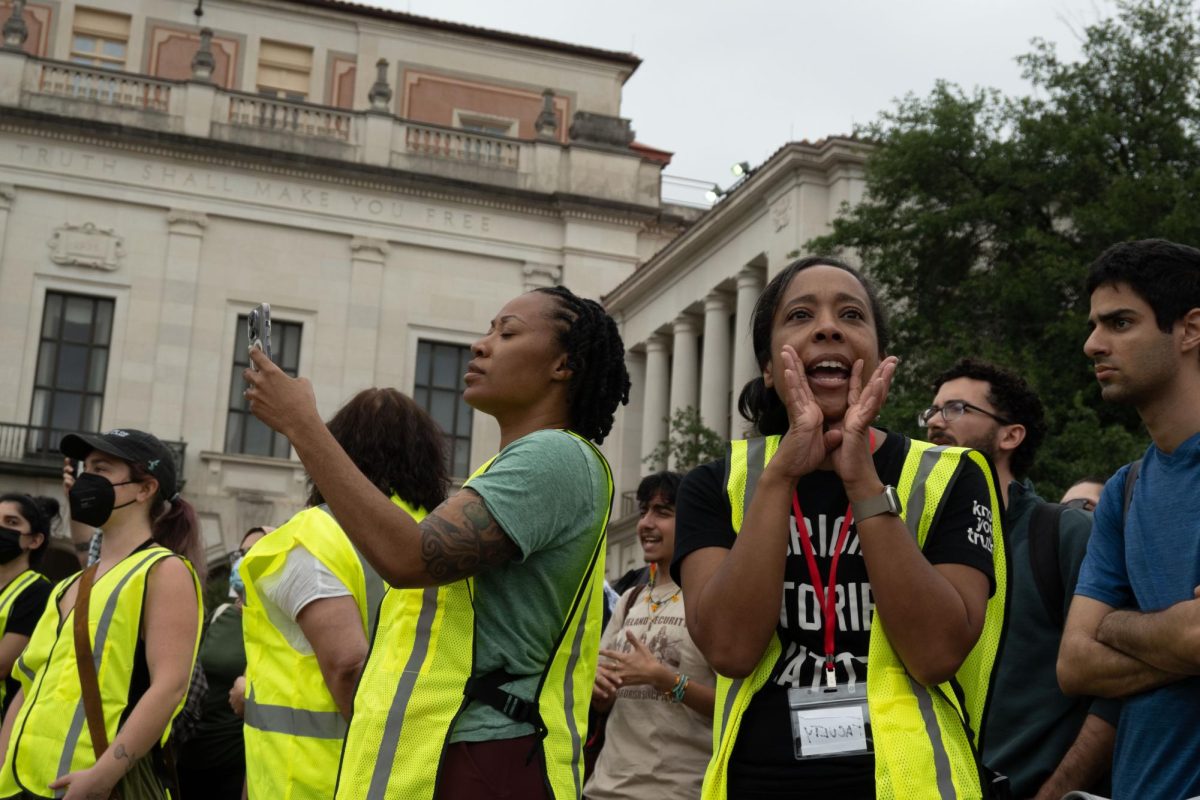Although today’s tattoos serve aesthetically pleasing or emotional purposes, the tattoos of the future have the potential to revolutionize the healthcare industry if aerospace engineering assistant professor Nanshu Lu has her way.
Lu worked to create a small flexible tattoo that can monitor vital signs, power itself and transmit data in a more compact way than the bulky options available today. The current product is a temporary patch placed on the skin, although she is also working on a more advanced version that will dissolve into skin for one-time use.
Vital sign monitoring is the most basic and immediate application of this technology. People with atrial fibrillation, an abnormal heartbeat, who have electrodes pinned in their hearts and battery boxes in their chests, would have a more comfortable alternative, and parents of newborns could monitor their infants at home and possibly prevent Sudden Infant Death syndrome.
“Actually, every newborn is supposed to be monitored in the hospital for at least six weeks before they can be released to home, but with current medical facilities it’s not possible, they are all released immediately. But think about newborns – they cannot express themselves, they don’t know what’s wrong, so if there is any condition going on there is a very huge tragedy,” Lu said.
Although the technology for flexible electronics was developed more than 20 years ago when people started to imagine light weight, paper-like display, there is a tremendous challenge to make these stretchable electronics flexible enough, Lu said.
“What does flexible mean? It’s really a mechanics concept, so flexible electronics has to be a perfect marriage between mechanics and electronics. That’s how I was involved,” Lu said.
Currently, Lu and her research team work on the sensing component of the tattoo, but a lot of work involving the power, data transmission and other components still has to be done.
The cost of making one tattoo is around $50, exculding labor. When the tattoos become commercialized, Lu said she sees the one-time use version selling for $10 or less. Every batch contains around four or eight tattoos. The funding for her research comes from the National Science Foundation
Lu began the project in 2010 at the University of Illinois – Urbana-Champaign with researcher John Rogers, and continued her work at UT since September 2011.
This tattoo would be a great advantage to parents of all newborns, Lu said, because it would not irritate the skin or interrupt the body’s natural activity.
“It’s so easy to use and transmits data wirelessly to the hospital station that even parents with very little training can apply [it to their children] – that would be a great advantage, and a great addition to current medical care,” Lu said.
Lu said the device is made of silicon, because it outperforms other materials and because of its durability, although there is a challenge in making it flexible.
“I started to think about yes, silicon, metal—they are all rigid, they are all very, very stiff. But actually we can get inspired by comparing window glass with glass fibers,” Lu said. “Both of them are made out of glass, silicon dioxide, but window glass is thick and large so they are not bendable or flexible; However, the glass fibers are thin, narrow, and long. Even if it’s still glass which is intrinsically brittle, it’s because of the dimension it becomes flexible.”
Lu also compared the stretchable electronics to a piece of paper. A generic piece of printer paper is not stretchable and will tear if pulled, but a cutout of a pattern can stretch more than one time the original length.
“That’s 100 percent strength. Now imagine if I shrink this by more than 1000 times and replace them with a circuit or metal, you can then start to manufacture stretchable electronics, and imagine that these are the same types of metal and silicon used in traditional wafer-based electronics,” Lu said. “Their electrical performances are on par with all of the conventional devices.”
Lu works closely with other professors, such as assistant professor Deji Akinwande. Akinwande and Lu started collaborating on a flexible electronics project a year ago work, which relates to Lu’s tattoo research, Akinwande said.
“I find her to be a very intellectual stimulating professor and very open minded with her ideas,” Akinwande said.
Follow Wynne Davis on Twitter @wynneellyn.



















